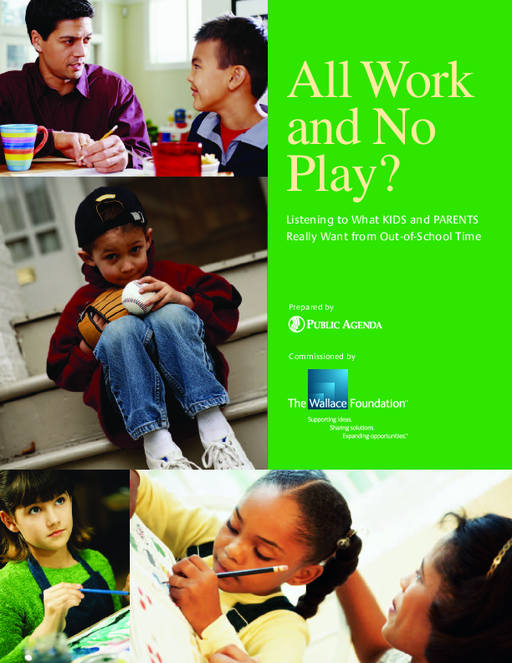Breadcrumb
- Wallace
- Reports
- All Work And No Play? Listening ...
All Work and No Play?
Listening to What Kids and Parents Really Want from Out-of-School Time
This report on a national survey explores the often-overlooked views of parents and children on what they want from afterschool and summer programs.
November 2004

Table of Contents
Summary
This national survey from Public Agenda sheds light on what children and their parents want from out-of-school time (OST) programs, adding their often-missing voices to the OST policy discussion. It finds that the vast majority of families want afterschool and summer programs, but it also reveals differences in expectations and satisfaction—particularly along racial and socioeconomic lines.
Topics:
Now Viewing:
Overview
Next: Implementation Tips

